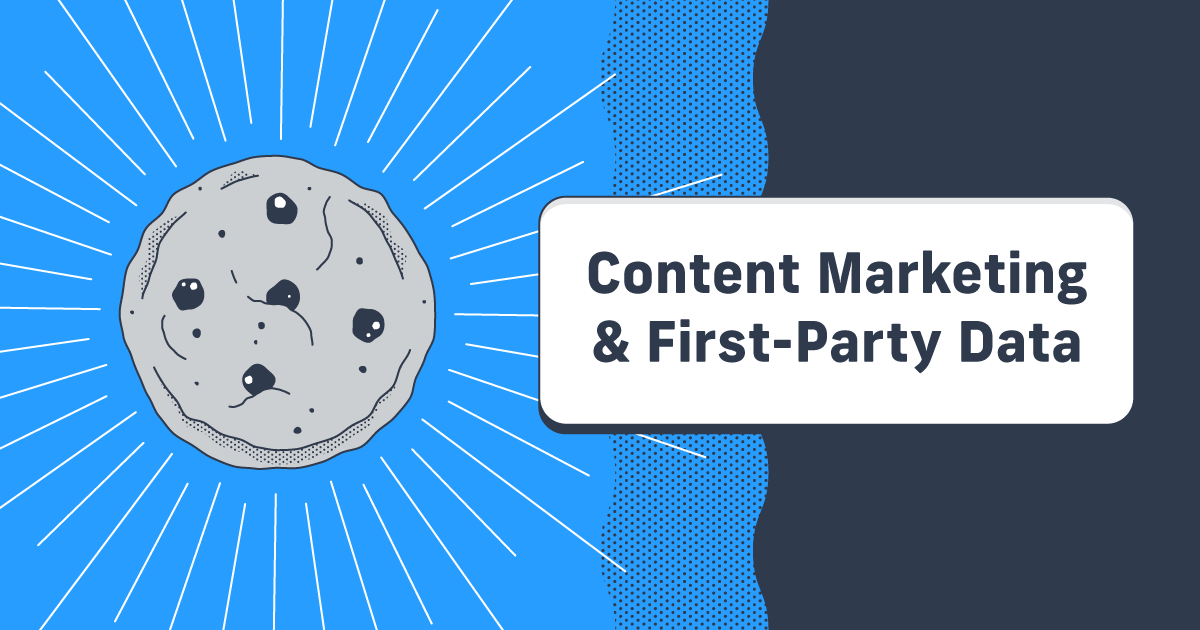Complete Book Marketing Plan for Creators and Authors
If you’re a content creator, you know how challenging earning revenue from your work can be. While you can do several things to promote your work as an independent creator, all your efforts will fall flat without a marketing plan.
Ask any successful entrepreneur, creator, or author, and they’ll tell you the same thing: you have to treat yourself like a business. That means creating an author brand, establishing an audience, and turning out content.
None of that is possible without a plan. If you want to sell a book (or anything you’ve created), this marketing plan lays the foundations for success.
The Book Marketing Plan
Your marketing strategy must be unique to you, your goals, and the type of content you create. No single answer will magically help sell your book. This guide provides best practices and tools for your marketing efforts.
You might only need some tactics in this guide. However, a thorough understanding of an effective book marketing strategy will guide you to success.
Before we get into the nuts and bolts, here are the stages of the marketing plan.
- Market Research – Learn about your genre, competition, audience, and publishing options.
- Audience Building – Find guest blogging opportunities, get published online, and develop an author brand.
- Budgeting – Determine your publishing and marketing budget.
- Pre-Launch – Build hype with your audience, sell pre-orders, and prepare your products and services.
- Launch – Fulfill pre-orders, share your new book’s product page, and promote your brand.
- Post-Launch – Continue selling your book while adapting your content to other marketable products.
Okay, let’s dig into these six stages with more details!
Market Research
Before you dive into market research, start by answering these three questions:
- What is my goal for this book?
- What does my audience look like?
- What is my genre/niche?
Unless you’re writing entirely for enjoyment, your audience will be the first and most important consideration. The best way to imagine your audience is by creating personas. I suggest taking some time to develop a few personas. Each should define a segment of the audience you’ll be marketing to.

Now, consider your genre. Using your personas, you can define your niche—take that information and go to the bookstore. You want to find as many popular books that fit your genre and niche as possible. Read them. Take notes about what you like, what works, and what doesn’t.
While not looking for content to copy, you should consider any gaps those books don’t cover. That might be the perfect topic for your book to cover!
Finally, you’ll want to look at your publishing options. Map out the customer journey to understand where your potential readers like to shop. Pair that knowledge with the publishing options that best meet their needs while ensuring you earn the most revenue.
For most creators, going the self-publishing route will give you the most options and control. Self-published authors usually follow one (or multiple) of these paths:
- Selling through a retailer (like Amazon)
- Selling through a dedicated storefront (like the Lulu Bookstore)
- Selling directly from their author website (using Lulu Direct)

Your Free Lulu Account
Create a Lulu Account today to print and publish your book for readers all around the world
Additional Research and Planning
Your market research has two essential goals:
- Help you understand how to write and design your book for your audience
- Finding new followers and building your audience
The first point I covered—you need to research similar books, understand your niche, and speak to the unique problem you’re an expert in. You’ll naturally learn about your ideal audience as you research other creators and their books, but there are a couple of vital steps you can take now to set yourself up for long-term success.
- Employee SEO best practices to establish yourself online
- Collect and leverage data from your followers and customers
Search Engine Optimization (SEO) involves understanding how people search online and then creating content that is more likely to appear in their search results. This includes carefully evaluating the copy on your website, in your online store, blog content, and any other content channels you use. That includes things like YouTube (the title and description matter!).
The other side of SEO is the data you collect, the most crucial of which is your fans’ email addresses. No joke, email is consistently the best marketing channel for return on investment (ROI). Collecting email addresses through a signup form on your site or selling directly to your readers allows you to share new offers, content, and updates.
Your email list is your most valuable resource for today’s content entrepreneurs (which you are if you’re creating and selling content to make money). During the planning and research phase, take some time to learn how to develop and nurture a mailing list (this will be crucial for the next step!).
Market Research Tools
Like most things, there are many options for market research tools. Here are a few that are free to use and effective for learning more about your potential readers.
- Answer The Public – Ignore the weird GIF playing on the home page. Answer The Public takes any topic and shows you related search phrases.
- U.S. Census Bureau – Their search function lets you leverage all the data of the U.S. Census to understand better how your audience shops.
- Google Trends – Quickly and easily discover topics getting attention in Google searches to learn what people seek.
Audience Building
Unless you’ve already got thousands of email subscribers or tens of thousands of social media followers, you must build your audience.
The most critical audience you’ll develop is your email subscriber list. I know I just mentioned that in the previous section, but email is so important it’s worth saying again. When someone gives you their email, they tell you they want the content you create. That’s a pretty big endorsement.
Email isn’t the only way to build your audience, though. There are many ways to build a name for yourself while connecting with new fans. These include:
- Paid Search Advertising
- Organic Search (SEO)
- Social Media Marketing
- Content Creation
- Events & Speaking Opportunities
Paid and Organic Search
I touched on SEO in the research section. We don’t need to belabor the point, but you should always consider how your content will rank when you publish a new blog post, video, podcast, or website update.
Paid search is a trickier game. You shouldn’t use paid search and advertising until you’re comfortable developing content that organically performs well. Paid strategies will work best once you’ve identified a target audience and have a wealth of valuable keywords and search terms to use.
Social Media
Social media is your go-to for word-of-mouth marketing. You don’t need to be a viral TikTok influencer to reap the benefits of social media.
In fact, creating content for social media is one of the least important parts of your social media strategy. The most significant benefits of social media will come from Facebook groups or similar pockets of highly interested fans who have self-identified the kind of content they want.
Social media marketing strategies can vary wildly based on your goals and the social media platforms you’re focusing on. The one common thread is the need to connect with your followers as a person rather than a brand or business. Answer questions, respond to comments, and generally be available to the people you want to buy your products.
Here is a quick, three-step plan for establishing a presence on most social platforms:
- Pick 2 or 3 social media sites to frequent. You can’t be on all of them all the time, so focus on the ones with the best audience for your content.
- Create a social media profile unique from your personal profile.
- Share new content regularly and pay attention to what resonates (based on engagement and comments).

Content Creation
You should look for opportunities to display your expertise and promote yourself. Lean into the kind of content creation that works best for you and is most appealing.
Guest blogging is a great way to reach a new audience. Platforms like Medium and Substack have lots of publications looking for content.
You’re building a network of consumers for your books and establishing a following of content consumers. People love content.
Another medium to consider is podcasting, a growing medium with many opportunities to find guest spots in your niche. And YouTube still has a vast audience and plenty of channels looking for guests.

Create Your Book
Use Lulu's free templates to easily create and publish your book today.
Speaking at Events
These could be in-person events or digital. The goal is to land a speaker spot, but the first step is to attend some events. Events are an opportunity to connect with other creators (leading to collaborations) and to learn the best practices that work for successful entrepreneurs.
As you develop a brand for yourself, having a cadre of peers to ask for help or even commiserate with is crucial. Once you earn a speaker spot, you’ll have the attention of a room full of people—all of whom hope to achieve similar goals. This is a huge opportunity to promote yourself.
Finally, bring your book to events! Your book is like a business card, only infinitely better. Give away free copies to other creators. If they like it, there’s a good chance they’ll recommend you to their following, helping expand your reach while building relationships that will prove vital as you grow your content business.
Budgeting
Keep your marketing budget separate from any funds you allot for editing, design, and publishing. You must also set aside funds for website hosting, printing, and ecommerce services, but those are still separate from your marketing budget.
Your marketing budget will need specific book sales targets. There’s no one answer because every indie author has a different goal. But you should base your expectations on your audience size and goals.
Here’s a simple marketing plan template to estimate revenue from your book sales:
| Pre-Publishing | 1 Year Goal | 2 Year Goal | 3 Year Goal | |
| Revenue | $0.00 | $5,000 | $7,500 | $9,000 |
| Sales (units) | 0 | 2,200 | 3,000 | 3,500 |
| Email Subscribers | 50 | 400 | 800 | 1,100 |
| Facebook Followers | 300 | 1,000 | 1,500 | 2,000 |
Once you establish your initial marketing budget, you can plan your book launch!
Pre-Launch
How long you plan to prepare and market your book before launching it can vary, but you should allow at least three months to get the word out, get some reviews, and publish your book.
Timeline
Your timeline allows you to break down the big and complicated task of marketing your book into smaller, achievable individual goals.
Here’s a generic timeline with a twelve-week work-back plan. This timeline begins when you have 12 weeks until your book’s planned launch day and lists tasks to get you to the launch date.
| 12 Weeks | Contact reviewers/bloggers | Contact local bookstores | Finalize cover and graphic designs |
| 11 Weeks | Begin drafting book release page (website) | Order Advance Reader Copies (ARCs) | Approve graphics |
| 10 Weeks | Create social media schedule | Outline social posts for launch | Plan graphic variants for social platforms |
| 9 Weeks | Draft release announcements (press release, blog, email) | Plan giveaways | Finalize your budget (make any final adjustments) |
| 8 Weeks | Post initial teasers on social media | Email teaser | Check in with reviewers/bloggers |
| 7 Weeks | Check in with ARC readers | FInalize all graphics | Take a rest, go see a movie or concert |
| 6 Weeks | Schedule social media posts for next 6+ weeks | Incorporate ARC comments/edits | Finalize any giveaways |
| 5 Weeks | Finalize design and order final proof copy | Launch giveaways/contests | Begin launch email campaign |
| 4 Weeks | Announce any signings/appearances | Order initial bulk of books | Finalize online listings (book retail sites) |
| 3 Weeks | Publish a teaser (first chapter) on blog | Finalize launch page, incorporating reviews | |
| 2 Weeks | Send reminders about signing/appearances | Increase social media push | Take another rest |
| 1 Week | Make launch page live | Begin taking pre-orders | Reserved for Emergencies |
| Release! | Sell Books! | Continue social media and email campaigns | Publish and promote ‘at launch’ materials |
Publishing
You’ll need to prepare your content for publishing during the pre-launch phase. That includes editing and completing your content, designing the book, creating a cover, and preparing your sales page.
Decide on the formats (paperback, hardcover, ebook, etc.) and publish your book privately to get prints without it appearing for sale on retail platforms.
Incoming shameless plug for Lulu: We’re perfect for this since you can create and revise for free and order as many copies as you need. Take the time to create and review at least one (but probably multiple) printed proofs of your new book.
You’ll need parts of your upcoming book during the pre-launch marketing, creating digital content as teasers and using the blurb as a meta description for the product page and your cover. Your book cover is the most important marketing asset for promoting your books and developing your brand.
Finally, start thinking about how you’ll sell your book. Selling on retail sites is pretty simple: just select the distribution options that make the most sense for you. Of course, you need your book available on Amazon, but that should never be your primary means of selling.
The best way to sell your book is from your website or social profile. Bringing your readers to your author platform to purchase helps you build your email address (selling on Amazon earns you approximately zero data about your buyer). That’s where Lulu Direct comes in—you can connect print-on-demand to popular ecommerce platforms to sell your books quickly on your website.
Books Reviews
We all rely on positive reviews to prove that the product we’re buying will meet our expectations and needs. Treat your book just like any product for sale—which means you need to get some reviews before you launch!
You’ll need ARCs to send to peers and reviewers, so be sure to send them out with plenty of time for your advance readers to read the book and send you their thoughts. Use the best reviews as social proof on your book’s cover!
Finally, don’t skip reviewing your product. Get a proof copy before you launch to catch any typos and ensure your book looks perfect.
Crowdfunding
You don’t have to take advantage of crowdfunding tools like Kickstarter or Patreon, but if you are, you need to start during the pre-launch phase. How you manage your crowdfunding efforts deserves its own plan. I won’t belabor the point here, but if you are going the crowdfunding route to promote your book, read this guide from Indiegogo.

Your Free Lulu Account
Create a Lulu Account today to print and publish your book for readers all around the world
Launch
When the day finally arrives, you should have a growing list of subscribers, social media followers, and backers from your crowdfunding campaign. Make sure anyone and everyone who showed an interest in your book knows they can buy it.
Before you send that first launch email or post on Instagram, take a minute to review the product pages for your new book. That includes your own sales page and any retailer sales pages. If you see errors, fix them immediately (on your site) or request updates (for retail sites).
You can define for yourself how long your book launch lasts, but you’ll want to promote it aggressively for at least a couple of weeks, if not a month or more. The launch campaign will involve all your channels— email, social media, and vying for search engine results pages.
You must watch the data as users navigate your marketing funnel to capitalize on your book launch.
Book Launch Tactics
Successful marketing plans rely on data. If you’re not watching and reacting to the data you gather with tools like Google Analytics, you will not be as successful as you hope. Gathering and understanding data is too large a topic for this post, but I encourage you to check out Google’s Analytics Academy for lessons on using their tools.
Search Engine Optimization (SEO) is a fancy way of saying, “How easy is ____ to find online.” Search engines (which means Google for most of us) want to serve the person searching with the most relevant and useful pages first.
Think about it like this: if you title your book “Monster Coffee Mugs From Space,” you should rank well for that EXACT search. But anyone searching the individual terms (“Monster,” “Coffee Mug,” or “Space”) will probably never find your link. Since your metadata will include plenty of references to your book, Google should have a good idea about what you’re selling.
Search Engine Marketing (SEM) is the opposite of SEO. Instead of using keywords in your digital content (like the book’s description and product page), you’ll use keywords to display ads to searchers. SEM can be costly, as you must bid on relevant keywords. The benefit is visibility, as you can see in this example.

Search engine marketing is not a requirement or necessity for all authors. If you’ve got a large audience already, you may forgo paid ads and rely on your emails, social posts, and SEO to drive traffic to your book’s product page.
Social Media Marketing will play a massive part in your initial launch. Although you may get less sales through your social channels, using social media to spread the word about your book launch is still essential.
Your email strategy is the most critical marketing tactic, period. Email subscribers are the most interested and engaged of your followers, the most likely to meet the ‘true fan’ definition. And we all know that true fans—who buy most if not all of your products—are key to sustainable income as a creator.
Data Tools
- Moz – One of the best ways to research keywords, Moz will help you find related terms and search frequency to optimize your content for search.
- Google Search Console – Once you’ve connected to Google Analytics, the Search Console will help you learn how people find your website.
- Google Trends – With Google Trends, you can research popular searches and look for opportunities to show searchers your content.
Post-Launch
After the launch phase is complete, you need some downtime. Take a break, step away for a day or two, and don’t worry about selling books. The work goes into creating, publishing, promoting, and successfully launching a book is… a lot.
After some rest, return to your book and sales efforts to set the last piece of your marketing plan in motion.
The last phase of your marketing plan will center on long-term sales. Your book is no longer ‘new’ it joins all the other books and products you sell as part of your catalog.
That does not mean you stop marketing that book! Often referred to as backlist marketing, you’ll want to continue to promote your book (and all of your products) to your fans and followers. Think about marketing your backlist as a scaled-down version of your launch. You’ll do some normal promoting but with simplified ads and emails to make the process easier and less time-consuming.
Data plays a huge role in your post-launch marketing efforts. Keep track of which products from your backlist continue selling and which aren’t generating interest. Use that data to understand what your fans want; this can inform what you write or create next!
Marketing Platforms
We’ve covered the outline of a marketing plan. To end this post, I’ve got a few suggestions for platforms you can use to help achieve the various goals in your plan.
Email Tools
I’ll say it again: email marketing is your most important way to connect with your fans. You’ll likely need to invest in your email service provider, too, so carefully weigh your options when deciding how to email your readers.
- Really Good Emails – If you want to send better emails (or even the best emails!), you need to sign up for the Really Good Emails newsletter. They curate a searchable site with the best emails. Like, the absolute best.
- MailChimp – With free services for up to 2,000 subscribers and 10,000 emails sent monthly, MailChimp is the best option for new and novice entrepreneurs.
Social Media Tools
Social Media is an excellent means of engaging in continual, low-effort marketing. Ideally, you’ll focus your media efforts on the social media your readers will most likely engage with. Once you’ve pinned down the form of media, start posting regularly.
- Buffer – Affordable and easy to use, Buffer is perfect for creating, planning, and scheduling social posts. You’ll also be able to respond to comments from all your platforms and analyze a wealth of data.
- Hootsuite – For authors and creators with a few books in their catalog and a moderately sized social media presence, Hootsuite will be perfect. Their plan includes post-scheduling, a single dashboard for all profiles, and comment responses.
- Sprout Social – With the broadest set of tools, Sprout is also more business-focused than other social media tools. That means they emphasize selling and connecting with buyers over traditional posting and sharing.
Website Tools
There is plenty of publishing advice that will push you to use KDP and Amazon to sell your book. And you might want to do that. But you absolutely must have your website. Your website will be a hub for all your content (like your blog, videos, or podcasts) and a home for your product pages.
Selling on your site is more than just profitable; it’s also vital to building a community of fans and giving them a place to find the latest and greatest from you.
- WordPress – Easy to use and inexpensive, WordPress provides the tools you need to build a website and maintain a blog. With a vast ‘Plug-In’ library, you can adapt the basic site to fit your needs.
- Shopify – Most well-known as an ecommerce service, Shopify makes creating a website to sell your products easy. Their design features and blogging options aren’t bad, either.
Conclusion
When it comes time to sell the book, the more preparation and planning you can dedicate to the project, the more successful you’ll be.
Only expect success with a dedicated marketing plan.





